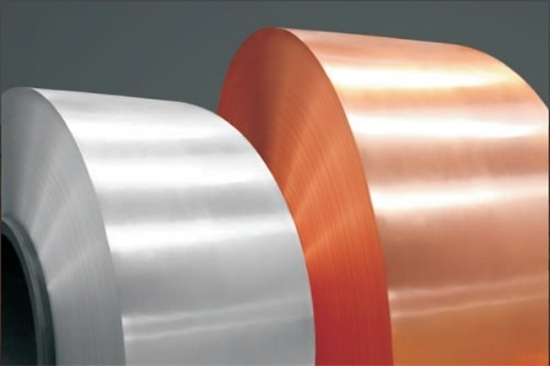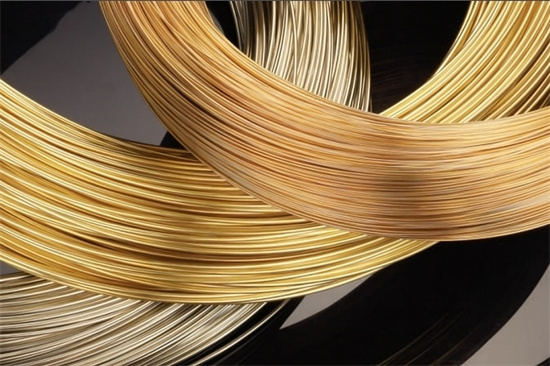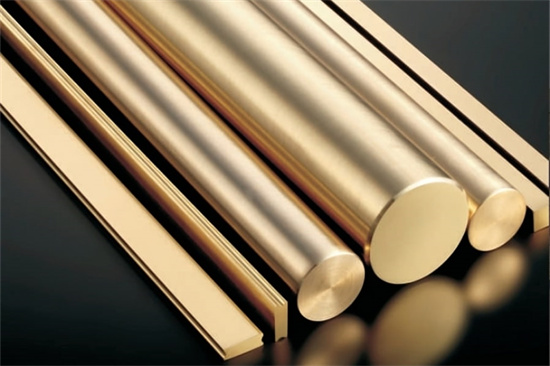


Nickel Silver: The Definitive Resource for Precision and High-End Manufacturing
Low MOQ
Provide low minimum order quantity to meet different needs.
OEM & ODM
Provide customized products and design services to meet unique customer needs.
Adequate Stock
Ensure fast order processing and provide reliable and efficient service.
Customer Satisfaction
Provide high quality products with customer satisfaction at the core.
share this article
Table of Contents
When it comes to versatile, attractive, and highly functional materials, Nickel Silver stands out from the crowd. Despite its name, this alloy contains no actual silver. Instead, it’s a copper-nickel-zinc alloy that offers the appearance of silver with the added benefits of corrosion resistance, strength, and formability. Whether you’re in the automotive industry, creating musical instruments, or designing decorative pieces, Nickel Silver might just be the perfect material for your needs.
In this ultimate guide, we’ll explore everything you need to know about Nickel Silver, from its composition and properties to its applications, pricing, and advantages. We’ll also dive into comparisons with other materials, helping you decide if Nickel Silver is the right choice for your project. So, let’s get started!
Overview
Nickel Silver, also known as German Silver, is a copper alloy that typically contains copper, nickel, and zinc. The material gets its name from its silvery appearance, which closely resembles that of sterling silver, although it contains no actual silver.
Key Features :
- Aesthetic Appeal: Shiny, silver-like appearance that doesn’t tarnish as easily as pure silver.
- Corrosion Resistance: Performs well in various environments, especially in marine and industrial applications.
- High Strength and Durability: Offers a great balance of strength and ductility, making it ideal for precision parts.
- Non-Magnetic: Suitable for electronic and electrical applications where magnetic interference needs to be minimized.
- Cost-Effective: Provides the look of silver without the hefty price tag.
Nickel Silver is often preferred over brass and bronze when aesthetic appearance and corrosion resistance are priorities. It’s also a great alternative to stainless steel in cases where workability and formability are important.
Types, Composition, and Properties
Nickel Silver comes in a variety of grades and compositions, each offering unique properties depending on its nickel, zinc, and copper content. Understanding the differences between these types can help you select the best material for your application.
Types and Composition
| Alloy Type | Copper (Cu) | Nickel (Ni) | Zinc (Zn) | Other Elements | Primary Characteristics |
|---|---|---|---|---|---|
| C74500 | 65% | 10-12% | 23% | – | Excellent corrosion resistance, moderate strength, used in electrical components. |
| C75200 | 65% | 18% | 17% | – | High strength and toughness, used in springs and industrial applications. |
| C75700 | 64-66% | 18-20% | 16-18% | Trace of Lead | Good machinability, suitable for decorative and precision parts. |
| C77000 | 55-65% | 18-20% | 16-18% | Trace of Iron | High strength and electrical conductivity, often used in connectors and terminals. |
Note: Compositions can vary slightly depending on the manufacturer and specific alloy grade.
Mechanical Properties
Let’s look at how different types of Nickel Silver perform in terms of mechanical strength, hardness, and ductility.
| Property | C74500 | C75200 | C75700 | C77000 |
|---|---|---|---|---|
| Tensile Strength (MPa) | 470-600 | 600-750 | 500-650 | 600-800 |
| Yield Strength (MPa) | 200-300 | 350-450 | 250-350 | 400-500 |
| Elongation at Break (%) | 20-35% | 10-25% | 15-30% | 10-20% |
| Brinell Hardness (HB) | 100-130 | 130-160 | 110-140 | 140-170 |
| Density (g/cm³) | 8.7 | 8.6 | 8.7 | 8.8 |
| Electrical Conductivity | 5-12% IACS | 4-10% IACS | 6-11% IACS | 5-8% IACS |
Key Characteristics
- Corrosion Resistance: Nickel Silver alloys provide excellent resistance to corrosion, especially in marine and industrial environments.
- Workability: These alloys are known for their good formability, making them easy to work with in manufacturing processes like stamping, forming, and machining.
- Non-Magnetic: The non-magnetic nature of Nickel Silver makes it suitable for use in electronic components where magnetic interference could be problematic.
- Cost-Effective Alternative to Silver: For decorative applications, Nickel Silver offers the appearance of silver without the high cost.
Applications
Nickel Silver is a highly versatile material that finds use in a wide range of industries. Its combination of strength, corrosion resistance, and aesthetic appeal makes it the material of choice for both functional and decorative applications.
Common Applications
| Industry | Application |
|---|---|
| Musical Instruments | Flutes, saxophones, guitar frets, and other wind instruments |
| Electrical Components | Connectors, terminals, switches, and precision contacts |
| Jewelry and Decorative | Bracelets, rings, belt buckles, and other decorative pieces |
| Automotive | Gears, bushings, and precision fittings in high-performance vehicles |
| Marine | Decorative trims, fittings, and components exposed to mildly corrosive environments |
| Industrial Machinery | Precision gears, bushings, and valves requiring excellent machinability |
Musical Instruments
Nickel Silver is highly favored in the manufacture of musical instruments, particularly wind instruments like flutes, trumpets, and saxophones. The alloy’s bright, silver-like appearance and excellent resonance make it the ideal material. Plus, it’s anti-tarnish properties ensure that instruments retain their lustrous finish over time, even with heavy use.
Electrical Components
Due to its non-magnetic properties and good electrical conductivity, Nickel Silver is used in electrical connectors, terminals, and precision contacts. The material’s resistance to corrosion and wear ensures reliability in high-performance environments, such as automotive electronics, telecommunications equipment, and military hardware.
Specifications, Sizes, and Standards
Choosing the right Nickel Silver alloy depends on your specific application. These alloys are available in a variety of forms, sizes, and grades, each adhering to specific industry standards. Let’s take a look at the most common forms and how they’re categorized.
Available Forms, Sizes, and Standards
| Form | Typical Sizes Available | Industry Standards |
|---|---|---|
| Sheets/Plates | Thickness: 0.5 mm to 100 mm | ASTM B122, DIN 17660 |
| Bars/Rods | Diameter: 2 mm to 500 mm | ASTM B151, EN 12163 |
| Wires | Diameter: 0.1 mm to 5 mm | ASTM B206, EN 12166 |
| Tubes | Outer Diameter: 10 mm to 300 mm | ASTM B135, BS 2870 |
| Castings | Custom sizes based on customer requirements | ASTM B30 |
These industry standards ensure that Nickel Silver alloys meet the necessary mechanical properties, tolerances, and chemical composition for each specific use case. For example, ASTM B122 specifies the properties of Nickel Silver sheets used in precision components and decorative items.
Suppliers and Pricing
The cost of Nickel Silver is influenced by several factors, including the grade, form, and quantity you require. Prices can also fluctuate based on the market value of copper, nickel, and zinc, which are the primary components of the alloy.
Leading Suppliers and Pricing Estimates
| Supplier | Location | Price per kg | Minimum Order Quantity |
|---|---|---|---|
| Aviva Metals | USA | $15 – $30 | 50 kg |
| Shanghai Metal Corporation | China | $12 – $25 | 100 kg |
| Bronze Alloys Ltd. | UK | $18 – $35 | 150 kg |
| MetalTek International | Global | $20 – $40 | Custom (depends on project) |
Prices vary based on the form of the material (sheet, rod, wire) and the specific grade of Nickel Silver. Larger orders often result in cost savings, so it’s important to consider your long-term material needs when making a purchase.
Advantages and Disadvantages
When discussing materials for your next project, it’s essential to weigh the advantages and disadvantages of Nickel Silver. While it excels in many areas, it’s important to consider how it stacks up against brass, bronze, or even stainless steel.
Advantages
| Advantage | Description |
|---|---|
| Aesthetic Appeal | Its silver-like finish makes it perfect for decorative and high-end applications. |
| Corrosion Resistance | Performs well in mildly corrosive environments, such as marine and industrial settings. |
| Non-Magnetic | Ideal for use in electrical components where magnetic interference is a concern. |
| Good Workability | Can be easily formed, stamped, or machined into complex shapes. |
| Cost-Effective Silver Substitute | Offers the appearance of silver without the high cost of sterling silver. |
Disadvantages
| Disadvantage | Description |
|---|---|
| Lower Strength Compared to Steel | Not as strong as steel, which may limit its use in heavy-duty applications. |
| Higher Cost than Brass | Nickel Silver is typically more expensive than brass, making it less cost-effective for some projects. |
| Limited High-Temperature Use | May lose strength at higher temperatures, limiting its use in certain industrial applications. |
| Lead Content in Some Grades | Some grades contain lead, which could raise environmental and health concerns. |
While Nickel Silver offers many benefits, it’s essential to consider the cost and specific application requirements. For example, while it’s more expensive than brass, its superior corrosion resistance and aesthetic appeal can make it a cost-effective choice in the right context.
FAQs
| Question | Answer |
|---|---|
| What is Nickel Silver used for? | It’s commonly used in musical instruments, decorative items, and precision components. |
| Does Nickel Silver contain real silver? | No, it’s a copper-nickel-zinc alloy with a silver-like appearance. |
| Is Nickel Silver expensive? | It’s more expensive than brass but cheaper than sterling silver. |
| Can Nickel Silver be welded? | Yes, but it requires specialized techniques like brazing to avoid defects. |
| Is Nickel Silver corrosion-resistant? | Yes, it offers good resistance to corrosion in mild environments. |
| Is Nickel Silver magnetic? | No, Nickel Silver is non-magnetic, making it suitable for sensitive electronic applications. |
| How does Nickel Silver compare to brass? | Nickel Silver is stronger and more corrosion-resistant than brass, but also more expensive. |
| Is Nickel Silver environmentally friendly? | Some grades contain lead, which may raise environmental concerns, but lead-free alternatives are available. |
Conclusion
Nickel Silver is a highly versatile material that blends strength, corrosion resistance, and aesthetic appeal. Whether you’re working on musical instruments, electronic components, or decorative items, this alloy offers a unique set of properties that make it an excellent choice for a wide range of applications.
While it may come at a higher price point than other copper-based alloys, the long-term benefits of durability, workability, and resistance to tarnish make it a cost-effective option for many projects. By understanding the different grades, applications, and specifications of Nickel Silver, you can make informed decisions that optimize your project’s performance and aesthetic value.
In summary, if you need a material that’s strong, beautiful, and reliable, Nickel Silver should be at the top of your list.
Maybe you want to know more about our products, please contact us
Get Latest Price
About Met3DP
Product Category
HOT SALE
CONTACT US
Any questions? Send us message now! We’ll serve your request with a whole team after receiving your message.

Metal Powders for 3D Printing and Additive Manufacturing
COMPANY
PRODUCT
cONTACT INFO
- Qingdao City, Shandong, China
- [email protected]
- [email protected]
- +86 19116340731








